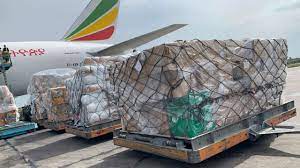
The International Air Transport Association (IATA) has projected that there will be increased profitability for airlines in 2023, which will then largely stabilize in 2024.
However, IATA said net profitability at the global level is expected to be well below the cost of capital in both years and very significant regional variations in financial performance will remain.
IATA stated that airline industry net profits were expected to reach $25.7 billion in 2024 (2.7 per cent net profit margin), which will be a slight improvement over 2023 and is expected to show a $23.3 billion net profit (2.6 per cent net profit margin).
“In both 2023 and 2024 return on invested capital will lag the cost of capital by 4p.p., as interest rates around the world have risen in response to the sharp inflationary impulse. Airline industry operating profits are expected to reach $49.3 billion in 2024 from $40.7 billion in 2023. Total revenues in 2024 are expected to grow 7.6 per cent year over year to a record $964 billion. Expense growth is expected to be slightly lower at 6.9 per cent for a total of $914 billion. Some 4.7 billion people are expected to travel in 2024, an historic high that exceeds the pre-pandemic level of 4.5 billion recorded in 2019 and cargo volumes are expected to be 58 and 61 million tonnes in 2023 and 2024, respectively, “IATA said.
IATA’s Director General, Willie Walsh, said: “Considering the major losses of recent years, the $25.7 billion net profit expected in 2024 is a tribute to aviation’s resilience. People love to travel and that has helped airlines to come roaring back to pre-pandemic levels of connectivity. The speed of the recovery has been extraordinary, yet it also appears that the pandemic has cost aviation about four years of growth. From 2024 the outlook indicates more normal growth patterns for both the passenger and cargo.”
Walsh further said: “Industry profits must be put into proper perspective. While the recovery is impressive, a net profit margin of 2.7 per cent is far below what investors in almost any other industry would accept. Of course, many airlines are doing better than that average, and many are struggling. But there is something to be learned from the fact that, on average airlines will retain just $5.45 for every passenger carried. That’s about enough to buy a basic ‘grande latte’ at a London Starbucks. But it is far too little to build a future that is resilient to shocks for a critical global industry on which 3.5% of GDP depends and from which 3.05 million people directly earn their livelihoods. Airlines will always compete ferociously for their customers, but they remain far too burdened by onerous regulation, fragmentation, high infrastructure costs and a supply chain populated with oligopolies.”
IATA also stated that overall revenues in 2024 are expected to rise faster than expenses (7.6 per cent vs. 6.9 per cent), strengthening profitability adding, “While operating profits are expected to increase by 21.1 per cent ($40.7 billion in 2023 to $49.3 billion in 2024), net profit margins increased at less than half the pace (10 per cent) largely due to increased interest rates expected in 2024.”
On revenue, IATA said that industry revenues are expected to reach an historic high of $964 billion in 2024.
“An inventory of 40.1 million flights is expected to be available in 2024, exceeding the 2019 level of 38.9 million and up from the 36.8 million flights expected in 2023.
Also, passenger revenues are expected to reach $717 billion in 2024, up 12 per cent from $642 billion in 2023. Revenue passenger kilometers (RPKs) growth is expected to be 9.8 per cent year on year. While that is more than double the pre-pandemic growth trend, 2024 is expected to mark the end of the dramatic year-on-year increases that have been characteristic of the recovery in 2021-2023.
“The high demand for travel coupled with limited capacity due to persistent supply chain issues continues to create supply and demand conditions supporting yield growth. Passenger yields in 2024 are expected to improve by 1.8% compared to 2023. Reflecting the tight supply and demand conditions, efficiency levels are high with the load factor expected to be 82.6 per cent in 2024, slightly better than 2023 (82%) and the same as in 2019.
IATA’s November 2023 passenger polling data supports the optimistic outlook, as third of travelers polled say they are traveling more than they did pre-pandemic. Some 49% indicate that their travel habits are now similar to pre-pandemic. Only 18% said that they were traveling less.
Looking ahead, 44% say that they will travel more in the next 12 months than in the previous 12 months. Only 7 per cent say they will travel less and 48 per cent expect to maintain similar levels of travel in the coming 12 months as in the previous 12 months.
According to IATA cargo revenues are expected to fall to $111 billion in 2024. That is down sharply from an extraordinary peak of $210 billion in 2021, but it is above 2019 revenues which were $101 billion. Yields will continue to be negatively impacted by the continued growth of belly capacity (related to strong growth on the passenger side of the business) while international trade stagnates.
“Yields are expected to further correct towards pre-pandemic levels with a -32.2 per cent decline in 2023 followed by a -20.9 per cent decline expected in 2024. They will remain high by historical standards, however. Note that yield progression has been extraordinary in these last years (-8.2 per cent in 2019, +54.7 per cent in 2020, +25.9 per cent in 2021, +7 per cent in 2022, -32.2 per cent in 2023).
On operational expenses, IATA said expenses are expected to grow to $914 billion in 2024 (+6.9 per cent on 2023 and +15.1 per cent on 2019). Fuel price is expected to average $113.8/barrel (jet) in 2024 translating into total fuel bill of $281 billion, accounting for 31 per cent of all operating costs. Airlines are expected to consume 99 billion gallons of fuel in 2024.
High crude oil prices are expected to continue to be further exaggerated for airlines as the crack spread (premium paid to refine crude oil into jet fuel) is expected to average 30 per cent in 2024.
Industry CO2 emissions in 2024 are expected to be 939 million tonnes from consumption of 99 billion gallons of fuel, “IATA said.
IATA stated that the aviation industry will increase its use of Sustainable Aviation Fuels (SAF) and carbon credits to reduce its carbon footprint.

“We estimate that SAF production could rise to 0.53 per cent of airlines’ total fuel consumption in 2024, adding $2.4 billion to next year’s fuel bill. In addition, the Carbon Offsetting and Reduction Scheme for International Aviation (CORSIA) is a global market-based carbon offsetting mechanism designed to stabilise international aviation emissions. The CORSIA-related costs are estimated at $1 billion in 2024, “it said.
It disclosed that nonfuel expenses have been controlled relatively well by airlines despite inflationary pressures.
“With fixed costs being distributed over a larger scale of activity as the industry recovered from the pandemic, non-fuel unit costs are falling in line with pre-pandemic level. In 2024 we expect non-fuel unit costs of 39.2 cents per available tonne kilometer (ATK) in 2024 which is 1.6 per cent above 2023 levels and matches 2019 levels. Total non-fuel costs are expected to reach $633 billion in 2024, “IATA stated.





